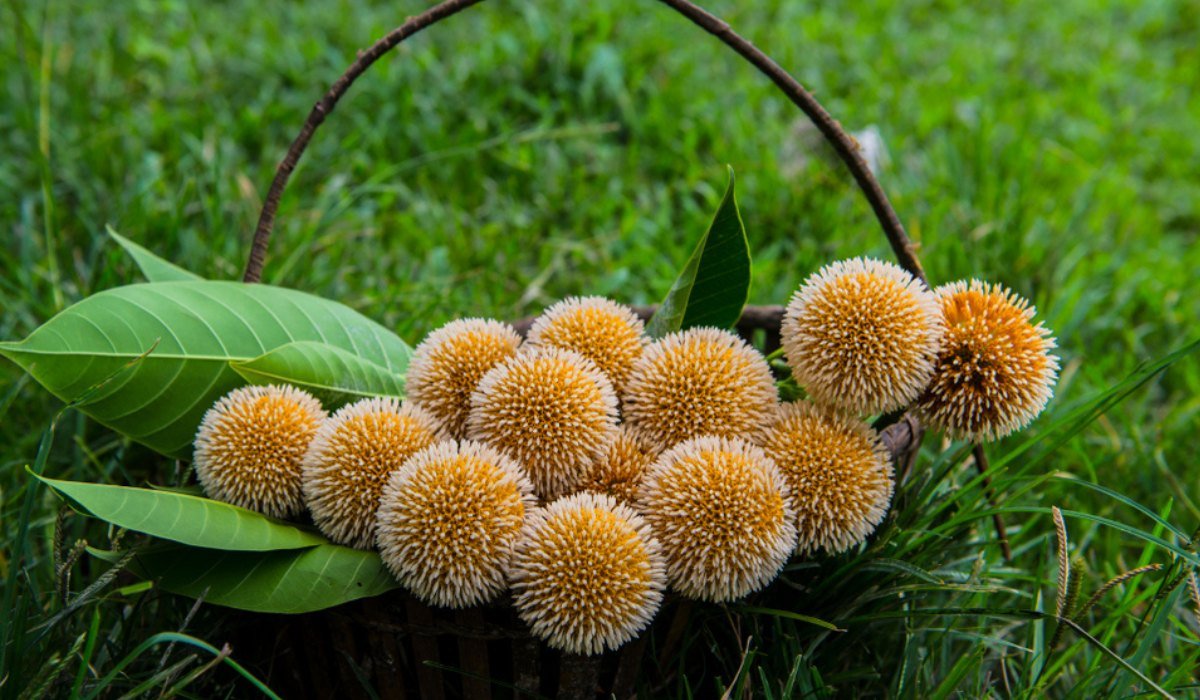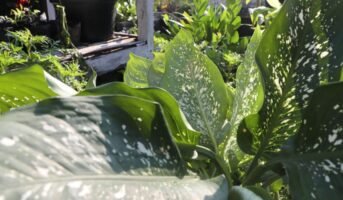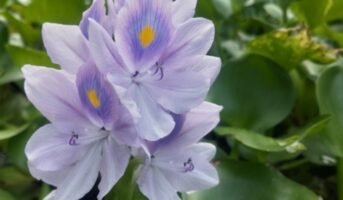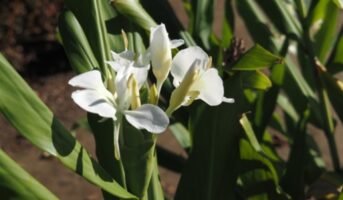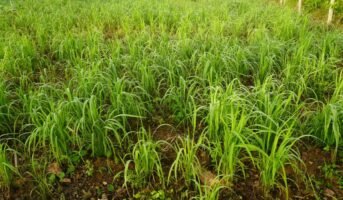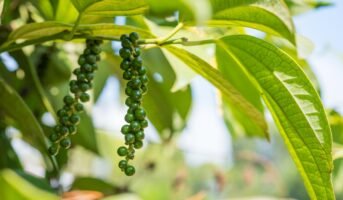Kadamba or Kadam is honored with a scientific name – “Neolamarckia cadamba,” also commonly known as “Bur flower tree.” Apart from Kadam and bur-flower trees, there are many names given to this plant, like White jabon, laran, Leichhardt pine, Chinese autocephalous, wild cinchona, etc. The exciting thing is that the Kadamba tree yields fruit in May; hence, it is called the May tree.
It is a fast-growing, evergreen tropical tree with unique flowers native to South and Southeast Asia. It is also popular in different regions of India, Bangladesh, Indonesia, Sri Lanka, Cambodia, Laos, Nepal, Myanmar, Philippines, Malaysia, Papua New Guinea, and Australia. Hamelia patens is also one of the important medicinal plants that belongs to the Rubiaceae family.
It is blessed with a broad crown look with a straight cylindrical bole. Moreover, people sow the seeds of Kadamba sacredly near temples. Kadam is one of the important medicinal plants that belongs to the Rubiaceae family. Here are some more details and facts about this tree.
know about: cinchona trees
About Kadamba tree
Kadamba tree can reach up to 45 m, i.e., 148 ft. in height. This plant is one large tree that is quickly growing, with wide-spreading branches. Its trunk has a diameter of 100–160 cm, and the barks are shaded with dark grey color, rough in texture, and often longitudinally cleft, shedding in thin scales.
# Leaves of Kadamba have a glossy green color with the large, oblong, bushy, dark, and shining opposite. They are 30 cm long and 10-15 cm in size, almost ovate to elliptical, sessile to petiolate with prominent veins.
# Kadam Flowers are red to orange in color that flourishes mainly when it is 4–5 years old, sweet and fragrant. The size flower has rounded heads of relatively 5.5 cm, i.e., 2.2 in diameter.
# Fruits of the Kadamba tree are circular, like small balls, hard, having roughly 8000 seeds. The fruits, when young, appear green and yellow when they turn ripe. The seeds of plants are trigonal or random in shape.
The Kadamba tree is an aboriginal ornamental plant in warmer parts of India. The tree blossoms during the rainy season. Some research papers also mention that birds and bats like this edible acidic fruit. People also utilize the Kadam plant for timber- and paper-making purposes.
This tree portrays some requisite significance in Indian mythology, tradition, and religion. Some strongly believe that the almighty has a presence in a Cadamba tree based on its severe influence on humankind. According to one Sanskrit shloka – “Ayi Jagdamba, Mad-Amba Kadamba, Vana Priyavasini, Hasa-Rate” explains that Goddess Durga relishes living in the forest of Cadamba trees.
know about: streblus asper
Kadamba historical significance
Kadamba holds a lively place in many Indian mythological, folklore, and historical literature as well. The Kadam tree connects with Lord Krishna, where Radha and Krishna used to love to play under the shade of the hospitable and sweet-scented Kadamba. Krishna also used to perform ‘Raas-Lila’ fascinating flute/Bansuri under the same tree in his younger days.
Bhagavata Purana mentions Kadamba and the Sangam period of Tamil Nadu and cites Murugan [from Thiruparankundram- the Hill of Madurai] as an attraction of nature worship that used to be spear-kind under Kadam.
This plant also relates to Kadambariyamman [a tree deity]. Meanwhile, the Kadamba is reckoned as the sthala vruksham meaning a tree of the place that is also familiar as Kadambavanam, meaning Kadamba Forest, sure to be existing in Meenakshi Amman Temple. You will not believe it, but a withered relic of this plant is sacredly preserved in the area.
Kadam tree – crucial facts
| Common name | Kadamba, Bur flower, Kadam Tree |
| Scientific name | Neolamarckia cadamba |
| Regional name |
|
| Distribution | India, Bangladesh, Indonesia, Sri Lanka, Cambodia, Laos, Nepal, Myanmar, Philippines, Malaysia, Papua New Guinea, Australia |
| Native | South and Southeast Asia |
| Light | Sun growing and Semi shade |
| Water | Normal [can consume more] |
| Primarily cultivation | Foliage |
| Season |
|
| Flower colour | White, Cream, off white, Light Yellow |
| Plant Size | More than 12 meters |
| Bark | Dark grey in colour, rough and frequently longitudinally fissured, exfoliating in thin scales. |
| Trunk | Diameter of 100-160 cm |
| Taste | Sweet and sour |
| Parts Used | Barks, Flowers, Leaves, Fruits. |
| Uses |
|
| Ayurvedic medicine from Kadam tree |
|
| Mode of Propagation | Seeds and Cuttings |
| Ways to Plant | Seeds are mixed with sand and tossed, they are patted down, do not bury the seeds |
| Season for Growth | Rainy Season |
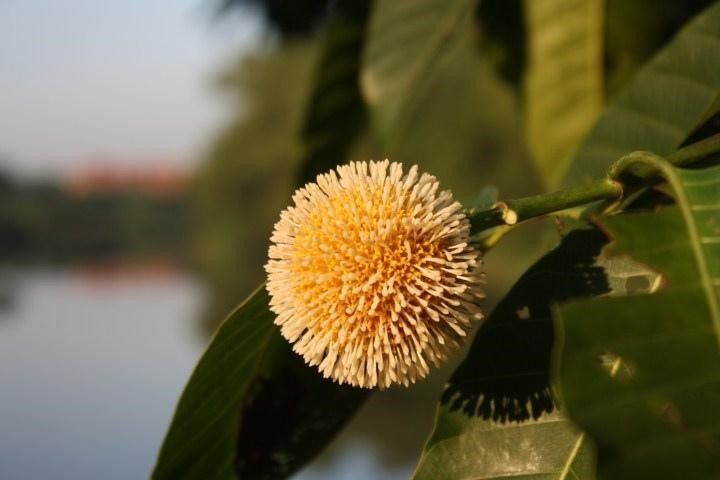
Source: Wikepedia
Special characteristics of Neolamarckia Cadamba
- Native to India
- Aromatic flowers and leaves
- Beneficial and Auspicious [Feng Shui] plant
- Enchant butterflies and bees
- Urged to create shade
- Quick nurturing trees
- Appropriate for avenue planting
- Good on seaside
Tips that will help you grow Kadam tree
- A warm and humid climate is best for tree growth, and rich loamy soil will give it a build.
- The growth of Kadam is fast, starting from the age of 6 till eight years, and in about 20 years, it will flourish to its maximum size.
- The Kadamba flower generally pops up between June to August.
- Tree flowers within 4-5 years old.
- People also plant the Kadamba tree near houses and roadsides as shade trees.
- Kadam is the most often planted tree across the tropics.
- Additionally, the Kadamba leaves turn yellowish because of iron deficiency in very alkaline lousy drained soils.
Remember that Anthocephalus cadamba is a conventional pioneer species that flourishes best on moist, alluvial sites and frequently in secondary forests situated along the riverbanks. Moreover, the transitional zone in the swamp is good for the Kadamba tree to grow where the area is periodically flooded.

Uses of Kadamba tree
- The tree of Kadamba is deeply associated as a medicinal plant in Ayurveda. The extract formulated from the tree’s bark, leaves, and other parts is said to cure many diseases.
- People usually plant Kadam as the Nakshatra tree in the heavenly garden.
- Besides planting purposes, the Kadamba flower is considered a crucial raw material used in the manufacturing of ‘attar,’ meaning an Indian perfume.
Detailed health benefits of Kadamba tree
The Kadamba Tree is unusual and extraordinarily useful for medicinal purposes. Read on to learn more about the wonderful health benefits you may sign up for.
-
Reduce blood sugar levels
Several studies mention that the Kadam tree’s leaf, roots, and bark can take the edge off blood sugar levels. The leaf of the Kadamba tree carries methanolic extracts that are an extraordinary asset in suppressing elevated blood sugar levels. Additionally, the alcoholic and deliquescent extracts of the roots offer antidiabetic activities.
-
Healing properties
Miraculous healing ability has been one of the well-known factors of the Kadamba tree since ancient times. The plant decoction piques the wound contraction with shooting tensile strength. Meanwhile, the healing time of the wound declines along with scar visibility. It is a prodigy.
-
Soothes pain
As mentioned before, the Kadamba trees in India are often used as Ayurvedic medicine that soothes any pain and inflammation. The leaves of the Kadam tree are tied to the affected parts of the patient. Several studies depict that its leaves and bark possess analgesic and anti-inflammatory characteristics that act as pain relievers.
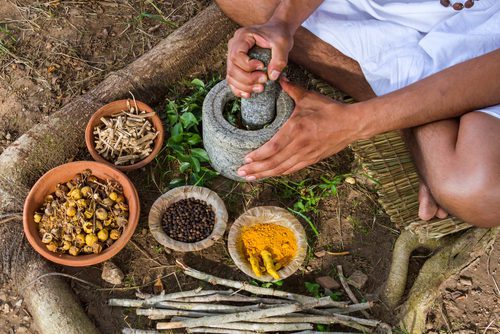
-
Antibacterial | antifungal
Long-time back, the anise used tree extract to prepare a paste as an antimicrobial agent for medicating skin diseases. Many research studies also convey that the Kadamba plant extracts have factors in fighting against bacteria. These are like proteus mirabilis, escherichia coli, and staphylococcus aureus. Not only bacteria, but it can also combat many kinds of fungi like trichophyton rubrum, candida Albicans, and other Aspergillus species.
-
Liver protector
Kadamba tree also possesses the chlorogenic acid of antihepatotoxic nature. In ancient times, many studies were performed on rats to discover the cure for many symptoms. Some show that the Kadamba tree decoction is highly efficient for improving liver health.
-
Moderates high-fat levels
The Kadamba tree root extracts hold lipid-lowering properties. The experiments conducted on rats with high–fat content prove the fact of lipid-menacing factors. The physicians-monks therapized roots of the tree and fed them to rats which resulted in a positive outcome as a medicinal herb.
-
Cancer
Kadamba tree creates a sort of antitumor activity widely utilized in managing many forms of cancer, such as breast cancer, prostate cancer, colon cancer, oesophageal cancer, etc. The plant also helps restrict the growth of harmful cells and control their spread. In addition, it has multiple bioactive compounds that are similar to chemotherapeutic agents.
-
Digestive system
The tree is remarkably beneficial to those suffering from stomach-related problems. If the patient is experiencing abdominal cramps, loose motion, and vomiting, the plant helps you keep your digestive system healthy.
-
Musculoskeletal diseases
This medicinal plant is associated with joint and muscle disorders. It is a pure analgesic and anti-inflammatory agent that helps treat arthritis, muscle stiffness, and rheumatism. The tree also has several flavonoids, such as silymarin, apigenin, daidzein, and genistein.
-
Parasitic infection
Kadamba tree yields anthelmintic activity in the form of an herb that tackles many parasitic infections like tapeworm, roundworm, pinworm, and threadworm. In general, unhygienic habits and contaminated food consumption leads to parasitic infections. If you use Kadamba regularly, it cuts down the recurrent parasitic infections and, in fact, boosts your immunity. In addition, the plant reduces the conditions like pain in the abdomen, vomiting, nausea, loose motions, and loss of appetite.
Traditional benefits of Kadamba
- Neolamarckia cadamba bark decoction is used to wash the infected wound.
- Several people use plant decoction to gargle and treat mouth ulcers or gum inflammation.
- Generally, the Kadamba decoction is recommended to consume in a 30-40 ml dose for diarrhea treatment and irritable bowel syndrome.
- The tree bark is powdered and further formulated with sugar candy in a proportionate dose of 5-6 gm for nausea treatment and vomiting.
- The juice extracted from Kadamba fruit is recommended in a dosage of 40-50 ml for extreme sweating, thirst, or any burning sensation caused in the body.
- The urinary tract infection and renal calculi can be treated if the root decoction of Neolamarckia cadamba is consumed in a dosage of 30-40 ml.
- The bark extract or decoction of the Kadamba plant in a dosage ratio of 30-40 ml should be taken to treat fever.
- The composed paste made from the bark of Kadamba can reduce black spots and pimples.
- Leucorrhoea or hyper menstrual flow can be treated with fresh juice extracted from the plant leaf while taking a dose of 10-15 ml.
- Also, this fresh juice extracted from the Kadam fruit enhances breast milk in lactating women.
- The formulated paste produced from the Kadamba leaf and its bark or stem is a good remedy for redness, pain, or any itching caused by an insect bite.
- The bark skin decoction of the Kadamba tree is a reliable medication for dysentery and colitis.
- The juice prepared from the bark skin of the Kadam plant, when combined with cumin seeds and sugar, relieves vomiting.
- Dysuria, glycosuria, and urinary calculi can be treated with the leachate of roots as it releases salutary in urinary ailments.
- Menorrhagia can be supervised with a proper intake of fresh juice decocted from Kadamba leaves.
- Kadamba tree leaves are also helpful in treating diabetes.
- In Ayurvedic medicine, the bark of Kadam can be consumed for blood-related diseases.
Kadamba: A symbol of wisdom
The Kadamba tree has been linked with knowledge, enlightenment, and spiritual growth. Thus, it is a powerful symbol of wisdom in different cultures. The tree is seen as a symbol of wisdom in many cultures. In Buddhism, the Kadamba tree is the tree under which Buddha attained enlightenment. Lord Krishna used to play under the shade of a Kadamba tree in his childhood, according to Hindu mythology.
Kadamba: The Tree of Love
The Kadamba tree is also known as the ‘Tree of Love’ owing to its association with the Hindu god of love, Kamadeva. In Hindu mythology, Kamadeva is believed to have used the Kadamba tree as a bow to shoot his arrows of love and desire.
The tree is also revered in the perspective of love and relationships, owing to its sweet-scented flowers. Moreover, the Kadamba tree is usually depicted in Indian art and literature as a symbol of romantic love and is associated with the divine love between Radha and Krishna.
Kadamba’s Fragrant Blooms
The Kadamba tree produces highly fragrant, yellowish-green flowers, having a sweet and heady scent. This makes the tree quite popular across different cultures. The Kadamba tree’s flowers have been used for centuries in traditional medicine, particularly in Ayurveda. These flowers are used in making perfumes and other fragrances. Moreover, the flowers are also widely used in religious ceremonies and are believed to have spiritual significance, according to Hinduism and Buddhism.
Kadamba tree: Additional facts
- Timber is helpful in light construction, plywood, boxes & crates, pulp & paper, dug-out canoes, and several furniture components.
- Kadamba is also appropriate for reforestation programs.
- A yellow dye can be abstracted from the root bark of the Kadamba plant.
- The Kadamba dynasty has named Kadamba as a holy tree.
- At times, the fresh leaves of the Kadam tree are used as serviettes or plates.
- Kadamba flower is considered the source of essential oil.
- The graceful appearance of the tree is admired particularly for flowering golden balls.
- It is acidic yet satisfying flavored fruit.
- Monkeys, bats, and birds adore the Kadam fruit.
FAQs
Is the Kadam tree good for home?
Kadam tree is often used as a furniture wood, firewood, a decorative plant, or a shade-giving tree. In addition, it possesses several potent medicinal capabilities or is preserved as a curative herb. Indeed, you can use it around residential areas as it has beautiful flowers.
Is Kadam flower edible?
The fruit, along with the inflorescences, is edible according to the research conducted in ancient times. Kadamba flower has multiple uses, including producing a sandalwood-based perfume named attar. Its fresh leaves can even be fed to cattle.
How do I identify a Kadamba tree?
A differentiative feature about Kadamba is its leaves seem pretty big, and you can see gum coming out of them. Kadam fruits look like lemons. Additionally, Kadamba Pushpam holds considerable fame in Ancient Vedas.
What is the meaning of the Kadamba tree?
A typical definition of Kadamba is 'an East Indian tree providing shade named (Anthocephalus cadamba) belonging to the family of Rubiaceae posing hard yellowish wood along with the globose clusters of flowers.'
How to get a Kadamba tree?
Research in Ayurveda proves that the decoction or extract consumption of the flowers, bark of the leaves, roots, and stems of the Kadamba plant have countless uses. You can locate or decorate a Kadamba Bonsai Tree in your home, where you have options to buy online and right away get it delivered through some online plant delivery.
| Got any questions or point of view on our article? We would love to hear from you. Write to our Editor-in-Chief Jhumur Ghosh at [email protected] |
Housing News Desk is the news desk of leading online real estate portal, Housing.com. Housing News Desk focuses on a variety of topics such as real estate laws, taxes, current news, property trends, home loans, rentals, décor, green homes, home improvement, etc. The main objective of the news desk, is to cover the real estate sector from the perspective of providing information that is useful to the end-user.
Facebook: https://www.facebook.com/housing.com/
Twitter: https://twitter.com/Housing
Email: [email protected]
